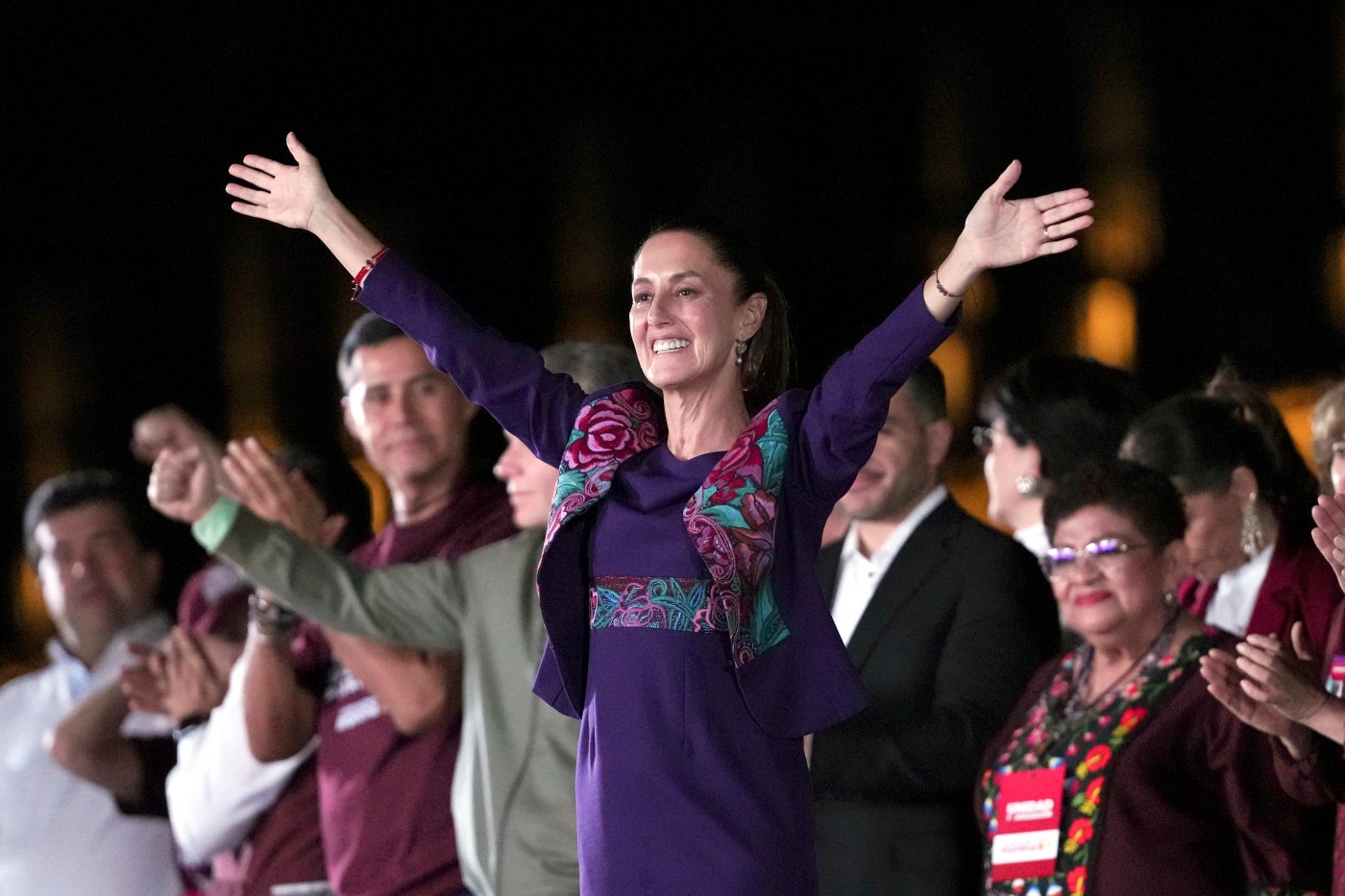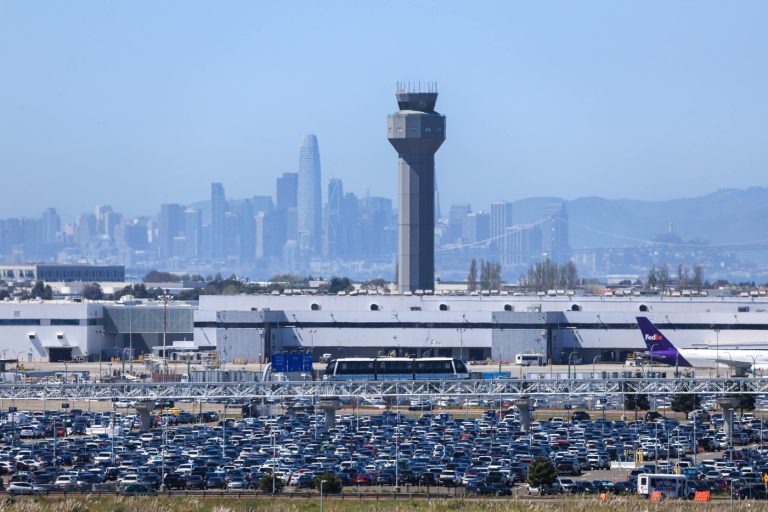As Mexico’s President-elect Claudia Sheinbaum prepares to step into her new role facing a host of political challenges, former colleagues from her time in the Bay Area say they expect her to approach these issues much as she did her scientific research — with a fact-driven approach shaped by her formative career as an environmental scientist.
While Sheinbaum is being celebrated worldwide as both Mexico’s first woman and first Jewish president, many have raised concerns about how she will establish herself as a leader after a win largely fueled by her promise to uphold the platform of her predecessor and mentor, Andrés Manuel López Obrador.
Sheinbaum will inherit the hefty debt of Mexico’s state-owned oil company while also seeking paths to implement renewable energy projects in an oil country. She also will step into her role amid historic numbers of migrants and rampant cartel violence.
But 30 years before her election as Mexico’s first woman president June 2 — before she was even a politician — Sheinbaum spent four years working in the Bay Area. Between 1991 and 1994, she conducted research at Lawrence Berkeley National Laboratory on energy use in Mexico while pursuing her Ph.D. in energy engineering from the Universidad Nacional Autónoma de México, said Matt Nerzig, manager of outreach communications at Lawrence Berkeley.
During her time in Berkeley, Sheinbaum engaged in scientific and policy discussions with fellow researchers, and took courses through UC Berkeley’s Center for Latin American Studies. Those who knew her during and after her time in the Bay Area describe her as intensely scientifically curious and driven to find the “why” of any problem.
Sheinbaum is “a very motivated person who wants to understand what is going on and why,” said Ashok Gadgil, a professor of civil and environmental engineering at UC Berkeley who worked alongside her at Lawrence Berkeley. They shared overlapping research interests of energy use in developing countries, Gadgil said.
Gadgil and Sheinbaum were frequently in the same meetings and conversations because of their shared energy interests — often asking the same questions of each other, he said. They would speak about energy efficiency, how energy affects emissions and what was happening with energy use in the developing world.
“She was a pleasant personality — but intense, not flippant,” Gadgil added. Sheinbaum was “really curious, wanting to know what is underlying, what is really happening, why is this data showing this.”
Gadgil described Sheinbaum as having an intensity of personality and strong scientific curiosity, with a drive to understand the data behind a given issue. This focus extended into creating “serious fact and evidence-based policies,” he said, then asking how these policies influenced the trends in the data.
“That’s a good question to have as a head of state,” Gadgil added.
As she enters a challenging political role, Gadgil predicted that she will not become inflexible or tied to a dogmatic viewpoint as president, but rather base her approach on facts. The “shining” quality of her leadership is her commitment to the scientific method, he added.
Ruling party presidential candidate Claudia Sheinbaum leaves the polling station where she voted during general elections in Mexico City, Sunday, June 2, 2024. (AP Photo/Eduardo Verdugo)
“She’s not driven by ideology, but by evidence,” Gadgil said. “She will be very skillful in balancing the needs of economic development, the needs of climate science and environment.”
Sheinbaum is a “disciplined” person, said Harley Shaiken, professor emeritus at UC Berkeley and former chair of the Center for Latin American Studies. “She is smart, decisive and her values, I think, resonate with improving the lives of ordinary Mexicans.”
Related Articles
Opinion: Mexico’s election of Claudia Sheinbaum is historic. But should we be celebrating it?
Death of Mexican man linked to bird flu strain that’s new in humans
Analysis: How did Mexico elect a female president before the United States? Not by accident
Claudia Sheinbaum becomes first female president of Mexico
A scientist, a leftist and a former Mexico City mayor. Who is Claudia Sheinbaum?
“She’s combining a number of unusual qualities,” Shaiken added, pointing to the political organizing Sheinbaum did as a student. “She knows what it feels like to be in the streets.”
Shaiken, who has met Sheinbaum and shares many mutual friends with her, believes that she understands how “critical” renewable energy is for Mexico, but will balance those developments with the important role of oil in Mexico’s history.
“She knows this not simply abstractly,” Shaiken said. “She knows the nuts and bolts of it.”
But as a person, Sheinbaum is “much different” than her political persona, Shaiken said.
“As a person, she is warm, witty and very thoughtful,” he said. “But she also, as a political leader, is focused and really baptized by fire after having been mayor for five years of Mexico City.”
Shaiken had coffee with Sheinbaum in Mexico City just two days before her election as mayor in 2018. This was their first time meeting, and for an hour, they spoke about her time in Berkeley and how she adapted to life in the Bay Area, including her involvement with UC Berkeley’s Center for Latin American Studies.
Shaiken recalled Sheinbaum saying that when she arrived in the Bay Area, “I got to Lawrence Berkeley, I didn’t know anyone, I’m Mexican, so I walked down the hill and I found the Center for Latin American Studies.”
Sheinbaum continued to collaborate with scientists from Berkeley Lawrence after leaving, Nerzig said. She was a contributor to two assessment reports of the Intergovernmental Panel on Climate Change, which were published in 2007 and 2014, and to a 2017 report on the energy efficiency of Mexico’s iron and steel industries, he added.
Though Shaiken did not meet Sheinbaum until much later, he said her time at Berkeley would have been an inspiration but not a radical shift of her political ideals.
“I don’t think she went in a different direction because of Berkeley,” Shaiken said. “She would have met people and observed things that she really was able to reflect on and be inspired by.”
Gadgil, too, said he believes her time in Berkeley left an impression on Sheinbaum, especially her time working at Lawrence Berkeley as a research scientist.
“It’s very difficult to not have a culture of research and inquiry and curiosity leave a deep impression on you, on the way you approach problems,” he said. “Four years is not a short time.”
Presidential candidate Claudia Sheinbaum of ”Sigamos Haciendo Historia” coalition celebrates after the first results released by the election authorities show that she leads the polls by wide margin after the presidential election at Zocalo Square on June 02, 2024 in Mexico City, Mexico. (Photo by Cristopher Rogel Blanquet/Getty Images)












